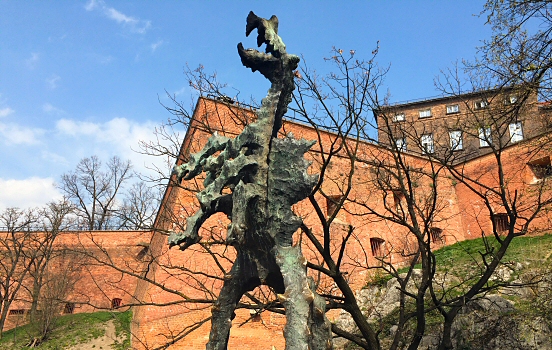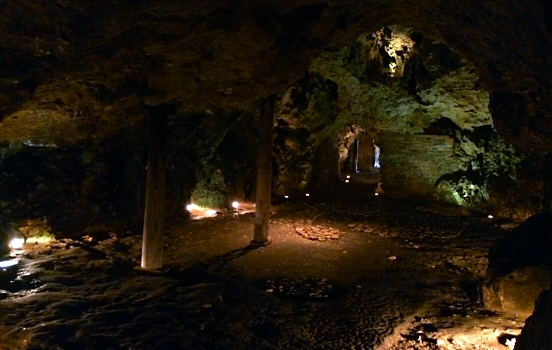Krakow wears its legends like a second skin. And deep in the belly of Wawel Hill, beneath the cathedral spires and royal bones, lurks a story that refuses to die.
During my travels I’ve seen a lot of statues depicting dragons. Saint Georg and the dragon is a popular motif all over Europe. I liked the dragons of Ljubljana, where I crossed the Dragon bridge and saw the city emblem feature a dragon. But Krakow is probably the only place I know where you can actually visit a dragon den.
 The mighty Smok.
The mighty Smok.
They call it Smok Wawelski, the Wawel Dragon. A scaly beast from a time when myths were gossip and kings solved problems with swords. The tale’s been passed down through drunken toasts and dusty textbooks for a long time in this city.
The oldest version of the legend surrounding the Wavel dragon dates back to the 13th century. Supposedly a Polish prince slayed the dragon Smok and built a palace on top of the dragon’s cave. As you do.
 Dragon cave beneath Wawel Hill.
Dragon cave beneath Wawel Hill.
It’s a beautiful spring day, but instead of enjoying the sun, I set out to explore the area around Wawel Hill. The cathedral next to the palace have “dragon bones” hanging in a chain above the entrance and also features a dragon statue. But I’m more interested in the hidden darkness below.
The cave beneath the castle is not exactly Erebor in terms of grandeur, but it’s still 270 meters long. During medieval times the cave acted as a tavern and brothel, while today it’s a popular tourist stop.
To make sure that everyone get the message, a statue of Smok guards the entrance to the cave. Cast in metal, jaws gaping with actual fire spewing from its mouth like a drunken street performer who never got the memo that the Middle Ages ended. That dragon, cheesy as he might seem, is more than a mascot. He’s a symbol of survival in a city that never quite lets go of its ghosts.
In short, here be dragons. Just not the ones with scales and teeth, but the ones that lives in every city that’s had to fight to stay on the map.

Comments
No comments yet.
Leave a reply